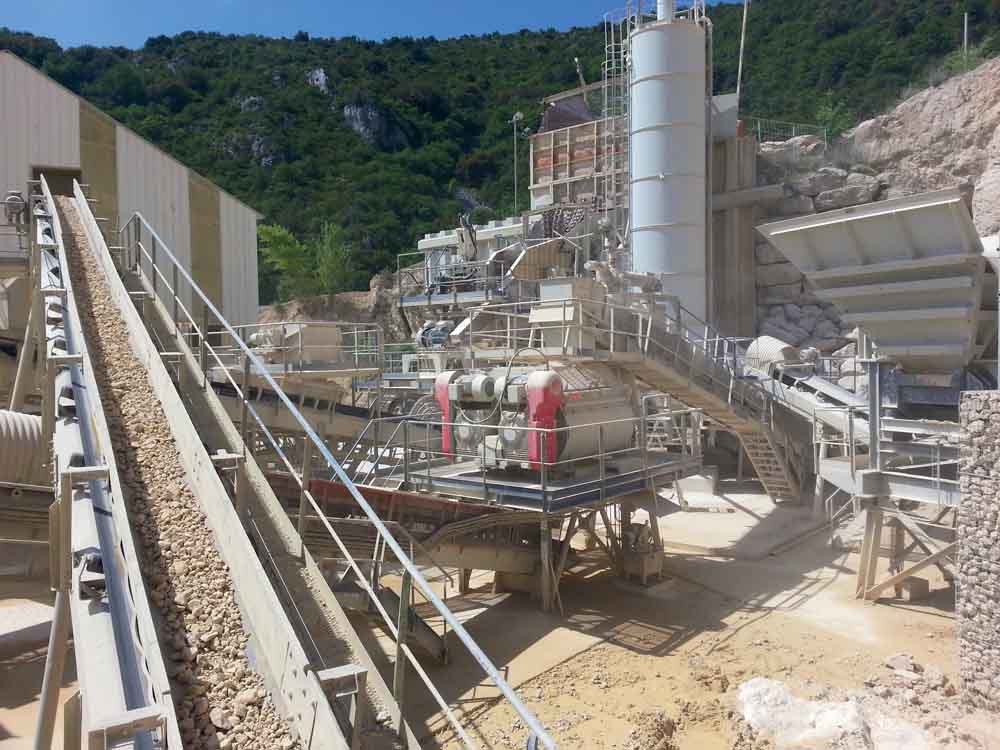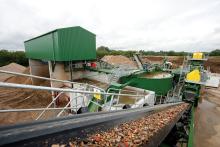
An innovative method of monetising overburden from quarry and gravel pit aggregate production has been developed by a leading German quarrying equipment manufacturer. Guy Woodford reports
According to the company, operators are saying they can convert more than 90% of contaminated feed material into saleable rock grade using the Combimix system. At the same time, the dry process significantly reduces water, energy and material costs.
Until now, many quarries containing large quantities of material contaminated with clay have not been able to process such material economically. Frequently, the material has to be dumped at considerable expense as mining overburden.
Wet treatment is one method that allows this material to be used. But washing and subsequent water treatment as well as sludge disposal is extremely costly. The process often also fails as many quarries lack access to the volumes of water required.
Meanwhile, dry processing in conventional continuous mixers using quick lime has also been problematic because the retention times of the material in the mixer are so short that the clay cannot blend adequately with the lime.
The solution to this problem is widely seen as variable retention time. And the patented BHS Combimix system developed by BHS-Sonthofen is said to offer an economical alternative, with its practical suitability already proven in several quarries. The company says the basic principle around the system has been known for years but it has not been possible to implement it due to various limitations in mixing technology: mixing clay with quick lime changes the properties of the clay, which can then be reliably separated from the rock.
For the claimed first time, twin-shaft continuous DKXC type mixers allow regulation of the retention time of the material in the mixer within broad limits.
The clay has enough time to mix intensively with the lime and detach from the rock. The intensive movement of material during the mixing process also assists the cleaning process.
After screening, the feed material is so clean that it is no longer classed as waste and can be sold. Grains larger than 5mm in diameter that are largely free of clay can now be further processed in the gravel quarry. Grains less than 5mm in diameter form a lime/clay mixture that can be sold to the agriculture industry, for example.
The Combimix process is based on the combination of twin-shaft batch and continuous mixers manufactured by BHS-Sonthofen. Unlike traditional continuous mixers, the retention time of the mixture in the Combimix system can be regulated within broad limits – from less than 30 to more than 100 seconds.
BHS regulates the retention time via a gate on the underside of the mixing trough. The company says it is the only manufacturer that offers a trough with this design.
Extracted material is replaced with an equivalent volume of feed material. Continuous measurements are taken during this process to monitor the weight of the mixer. The quick lime is metered by a screw conveyor inside the mixer according to the clay content in the feed material in a range of less than one or a maximum of 5% of the feed quantity.
Together with the long retention time, the established three-dimensional mixing principle of the BHS-Sonthofen twin-shaft mixer makes an important contribution to achieving good results. The lime is mixed intensively with the clay so that the treated clay reliably separates from the rock. Costs for supplying water, reslurrying, filtering and disposing of the slurry are no longer incurred because the material is treated dry.
BHS-Sonthofen manufactures different versions of mixer for throughputs between 85 and 1,000tonnes/hour. The grain size of the feed material can range up to 150mm, depending on the mixer size.
BHS has installed the Combimix system in several quarries. One facility has been operating extremely successfully for several years in a quarry owned by the
More than 90% of contaminated feed material is now said to be sold as rock grade thanks to the Combimix system.
Jean-Serge Peret, plant manager at the Chateaubourg quarry owned by Cemex, is extremely pleased about the significant reduction in costs: “Before the mixer was installed, we had to break down 400,000tonnes of rock each year to obtain 300,000tonnes of saleable material. The new procedure means we only require 330,000 tonnes to achieve the same delivery quantity.”






